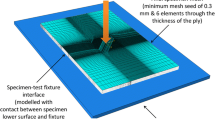Abstract
Particulate pollution has raised serious concerns regarding its potential impacts on human health in developing countries. However, much less attention has been paid to the threat of haze particles to machinery and industry. By employing a state-of-the-art in situ scanning electron microscope compression testing technique, we demonstrate that iron-rich and fly ash haze particles, which account for nearly 70% of the total micron-sized spherical haze particles, are strong enough to generate abrasive damage to most engineering alloys, and therefore can generate significant scratch damage to moving contacting surfaces in high precision machineries. Our finding calls for preventive measures to protect against haze related threat.
Similar content being viewed by others
References
Seinfeld J H. Airpollution: A half century of progress. Am Inst Chem Eng J, 2004, 50: 1096–1108
Zhang Q, He K, Huo H. Cleaning China’s air. Nature, 2012, 484: 161–162
WHO. Ambient (outdoor) air pollution in cities database 2014, http://www.who.int/phe/health_topics/outdoorair/databases/cities/en/, 2014
Guo S, Hu M, Zamora M L, et al. Elucidating severe urban haze formation in China. Proc Natl Acad Sci USA, 2014, 111: 17373–17378
Huang R J, Zhang Y L, Bozzetti C, et al. High secondary aerosol contribution to particulate pollution during haze events in China. Nature, 2014, 514: 218–222
Watson J G, Visibility J. Science and regulation. Air Waste Manage Assoc, 2012, 52: 628–713
Nel A. Air pollution-related illness: Effects of particles. Science, 2005, 308: 804–806
Chen R J, Zhao Z H, Kan H D. Heavy smog and hospital visits in Beijing, China. Am J Respir Crit Care Med, 2013, 188: 1170–1171
Wang Y, Zhang R Y, Saravanan R. Asian pollution climatically modulates mid-latitude cyclones following hierarchical modelling and observational analysis. Nat Commun, 2014, 5: 3098
Han W Z, Huang L, Ogata S, et al. From smaller is stronger to size-independent strength plateau towards measuring the ideal strength of iron. Adv Mater, 2015, 27: 3385–3390
Zheng K, Wang C C, Cheng Y Q, et al. Electron-beam-assisted superplastic shaping of nanoscale amorphous silica. Nat Commun, 2010, 1: 24
Shan Z W, Adesso G, Cabot A, et al. Ultra high stress and strain in hierarchically structured hollow nanoparticles. Nat Mater, 2008, 7: 947–952
Adachi K, Buseck P R. Internally mixed soot, sulfates, and organic matter in aerosol particles from Mexico City. Atmos Chem Phys, 2008, 8: 6469–6481
Meyer P W. Spheroidal Beads from Boiler Slag and Fly Ash; Ash Library, University of Kentucky, Center for Applied Energy Research: Lexington, KY, 1999. http://www.flyash. info/1999/newprod/ meyer2.pdf
Pósfai M, Gelencsér A, Simonics R, et al. Particles from biomass and biofuel burning. J Geophys Res Atmospheres, 2004, 109: D06213
Li W J, Shao L Y. Mixing and water-soluble characteristics of particulate organic compounds in individual urban aerosol particles. J Geophys Res, 2010, 115: D02301
Li W J, Wang T, Zhou S Z, et al. Microscopic observation of metal- containing particles from Chinese continental outflow observed from a non-industrial site. Environ Sci Technol, 2013, 47: 9124–9131
Valentini P, Gerberich W W, Dumitrica T. Phase-transition plasticity response in uniaxially compressed silicon nanospheres. Phys Rev Lett, 2007, 99: 175701
Chrobak D, Tymiak N, Beaber A, et al. From bulk to nanoparticles: Deconfining nanovolume signals a shift in material. Nat Nanotech, 2011, 6: 480–482
Zhu X F, Su J B, Wu Y, et al. Intriguing surface-extruded plastic flow of SiOx amorphous nanowire as a thermally induced by electron beam irradiation. Nanoscale, 2014, 6: 1499–1507
Zheng H, Liu Y, Mao S X, et al. Beam-assisted large elongation of in situ formed Li2O nanowires. Sci Rep, 2012, 2: 542
Johnson K L. Contact Mechanics. Cambridge: Cambridge University Press, 1984
Zhang P, Li S X, Zhang Z F. General relationship between strength and hardness. Mater Sci Eng A, 2011, 529: 62–73
Zhang J G, Sun D S, Shi H S, et al. Microstructure and continuous cooling transformation thermograms of spray formed GCr15 steel. Mater Sci Eng A, 2002, 326: 20–25
Osada T, Gu Y Y, Nagashima N, et al. Optimum microstructure combination for maximizing tensile strength in a polycrystalline superalloy with a two-phase structure. Acta Mater, 2013, 61: 1820–1829
Zhu Y Y, Li J, Tian X J, et al. Microstructure and mechanical properties of hybrid fabricated Ti-6.5Al-3.5Mo-1.5Zr-0.3Si titanium alloy by laser additive manufacturing. Mater Sci Eng A, 2014, 607: 427–434
Riahi A R, Alpas A T. Wear map for grey cast iron. Wear, 2003, 255: 401–409
Khruschov M M. Principles of abrasive wear. Wear, 1974, 28: 69–88
Nix W D, Gao H J. Indentation size effects in crystalline materials: A law for strain gradient plasticity. J Mech Phys Solids, 1998, 46: 411–425
Author information
Authors and Affiliations
Corresponding author
Electronic supplementary material
Supplementary material, approximately 972 KB.
Supplementary material, approximately 630 KB.
Rights and permissions
About this article
Cite this article
Ding, M., Han, W., Li, J. et al. In situ study of the mechanical properties of airborne haze particles. Sci. China Technol. Sci. 58, 2046–2051 (2015). https://doi.org/10.1007/s11431-015-5935-8
Received:
Accepted:
Published:
Issue Date:
DOI: https://doi.org/10.1007/s11431-015-5935-8




